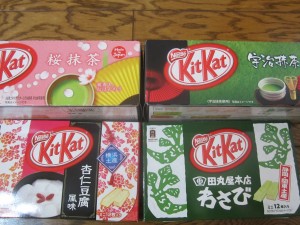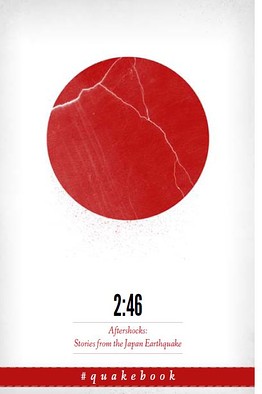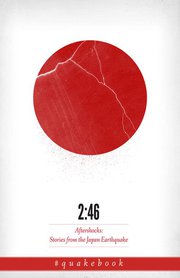WIT Life #162: Japan Tobacco
WITLife is a periodic series written by professional Writer/Interpreter/Translator Stacy Smith (Kumamoto-ken CIR, 2000-03). She starts her day by watching Fujisankei’s newscast in Japanese, and here she shares some of the interesting tidbits and trends together with her own observations.
My interpreting travels currently take me to Raleigh, NC, once home to a thriving tobacco industry. However, in addition to formerly being a center for textiles and furniture, those days are gone and different sectors have risen to take their place. As the group I am working with is studying economic revital ization, yesterday we visited the American Tobacco Historic District, once home to America’s largest tobacco plant. It has been converted into a multi-functional area which maintains the character of the historic buildings, while at the same time incorporating modern aspects to create a vibrant community of businesses and restaurants (We got to visit the headquarters of Burt’s Bees which is housed there!).
ization, yesterday we visited the American Tobacco Historic District, once home to America’s largest tobacco plant. It has been converted into a multi-functional area which maintains the character of the historic buildings, while at the same time incorporating modern aspects to create a vibrant community of businesses and restaurants (We got to visit the headquarters of Burt’s Bees which is housed there!).
In an interesting incidence of convergence, before heading to the district I read an article in the WSJ about how Japan’s disaster has affected its tobacco industry. It highlights how Read More
WITLife is a periodic series written by professional Writer/Interpreter/Translator Stacy Smith (Kumamoto-ken CIR, 2000-03). She starts her day by watching Fujisankei’s newscast in Japanese, and here she shares some of the interesting tidbits and trends together with her own observations.
I finally had a chance to sort through the pictures from my recent trip to Japan, which brought back many happy memories. I think I found them hard to deal with until now as they represent the demarcation between pre and post quake (I left the day before it hit). But I bit the bullet and looked at them for the first time since my travels, and I felt ok. I tried to think of my friends rebuilding their lives post-disaster and somehow getting by thanks to their hope for the future. As trite as it sounds, at this point they are taking things one day at a time as that is all they can do in the midst of the immense uncertainty that remains.
On a lighter note, one of the things that I love to do when I go back to Japan is check out the new flavors of items in konbini and other stores. One brand I am always sure to find is Read More
FoxHound87: Nagasaki, Day 2
Joshua Small is a First Year JET currently living in Ikaruga-cho, Nara-ken and has been chronicling his experience on his blog Snorlax87.
My second day in Nagasaki was spent touring what Nagasaki is REALLY famous for, the second Atomic bomb.
Our day started by taking the tram to the Peace Park. This was a very somber experience. The park stands as a memorial to the victims of the atomic bomb and as a reminder for the necessity of world peace. It was said that nothing would grow in the damaged areas for 75 years because of lasting radiation. The peace park also stands as a testament to the will of the Japanese people to rebuild and “blossom” once again. Cherry blossoms have flourished in the park.
On the left side of the park, there is a statue to mark the hypocenter of the blast. It is a large black stone with stone rings rippling out. Again, this is a tragic place to visit. Even if you believe the bomb was justified, it’s still very sad.
Towards the center of the park, there is a statue dedicated to the children who died. Most of the bomb’s casualties were women, children, and the elderly.
At the exit of the park lies a piece of Urakami Cathedral. Burns scar the brick wall, and you can even see where the heat blast bubbled the surface of the concrete. According to some of the plaques that lie scattered throughout the park, the a-bomb exploded 500 meters above this Catholic Church. How ANY of this church survived the blast is a miracle. Ironic, no?
CLICK HERE to read the rest of the post.
http://snorlax87.blogspot.com/
 Fukushima City JET Brent Stirling recently put out word to JETAA chapters about Quakebook, “a book of stories, art and photographs that reflected first person accounts of the disaster” which will soon be available on Amazon.com with all proceeds going to benefit the Japan Red Cross. Brent contributed his own story and has also offered to help with marketing and spreading the word. Below Brent provides some insight into the unique process that led to the creation of of the project as well as his own involvement.
Fukushima City JET Brent Stirling recently put out word to JETAA chapters about Quakebook, “a book of stories, art and photographs that reflected first person accounts of the disaster” which will soon be available on Amazon.com with all proceeds going to benefit the Japan Red Cross. Brent contributed his own story and has also offered to help with marketing and spreading the word. Below Brent provides some insight into the unique process that led to the creation of of the project as well as his own involvement.
I lived in Fukushima City from August 2006 to August 2010 and worked as an ALT there. The recent earthquake, tsunami and nuclear crisis in Tohoku has had me glued to my computer since it began, as has probably been the case with all JET Alumni. Keeping in contact with my friends in Fukushima-ken through Facebook and Twitter, I felt helpless as far as how to help and what to do.
With limited access to news in the first days after the quake, I compiled information from friend’s Facebook status updates, Twitter and a variety of news sources. I sent these updates via Facebook to my friends who didn’t have the time to comb through the news in order to get an accurate picture of what was going on. Updates included news about transportation, gas, areas with running water, wind directions, reactor conditions and radiation levels. Facebook became a source of news for everyone in the prefecture. The current and former Fukushima JET community along with Japanese people worked together in order to get a clear picture of what was going on in Fukushima.
A week after the earthquake, I was sent a link to a blog asking for contributions about the earthquake. The blogger, OurManInAbiko, hoped to create a book of stories, art and photographs that reflected first person accounts of the disaster. He vowed to edit all the submissions and donate all of the proceeds to the Japanese Red Cross. Looking to help anyway I could, I put in a submission about my experience in Canada throughout the ordeal and how proud the JETs and Japanese community had made me throughout the crisis. My submission discusses sensationalism in the media and how the JET community worked together using social media to overcome adversity and share accurate news on the situation as it unfolded. I didn’t know that within 15 hours, OurManInAbiko had received 74 eyewitness submissions from all over Japan, as well as reactions from elsewhere in Asia, Europe and North America.
Through Twitter, the idea of #Quakebook grew. Just as the Fukushima-ken JETs had used social networks in order to keep in contact, #Quakebook was using the networks in order to promote and create a book. People joined in to spread the word and help with the logistics of publishing a book of this magnitude in such a short span of time. Soon after, writer, William Gibson wrote a piece for the book, then Jake Adelstein contributed, Yoko Ono has recently come on board, offering her own piece in Japanese and English Through the work of so many on Twitter from all over the world, #Quakebook began to take off. Articles appeared on the BBC website, the Wall Street Journal and CNN Go to name a few. Amazon has agreed to publish the book, waiving all of their fees with 100% of the money going to the Japanese Red Cross. The all-volunteer team of #Quakebook is now working at getting translations of the book into different languages so that it can be a truly worldwide phenomenon.
The group that comprises the Quakebook team is continually growing. Every person involved is using their skills and their own contacts in order to get the word out to every corner of the globe. The team, while working closely is completely anonymous as everyone is referred to by their Twitter names. My role has been very small throughout the Quakebook marketing process, but I believe in the book and I think it has the potential to bring people who are otherwise removed from the situation in Japan closer to it. In buying the book, not only are people making a donation to the Japanese Red Cross, but they’re also getting the stories of the people involved, the people that this disaster has affected.
I know that all JET Alumni are tied to Japan the same way that I am. Everyone’s time in Japan had a profound affect on where they are now and what they’ve done with their lives. I’m hoping that this connection to Japan will get JET Alumni Associations worldwide to support and promote this book as best they can. By putting a link to the Quakebook website on your blog, printing Quakebook posters for around your neighbourhood or your local library or getting it into the media wherever you are, everyone can make a difference in this project and help with the relief efforts in Japan.
- Pre-order the book at www.quakebook.org
- Excerpts from Quakebook
- Brent’s re-work of his submission
WIT Life #159: UN Messages of Solidarity with Japan
WITLife is a periodic series written by professional Writer/Interpreter/Translator Stacy Smith (Kumamoto-ken CIR, 2000-03). She starts her day by watching Fujisankei’s newscast in Japanese, and here she shares some of the interesting tidbits and trends together with her own observations.
Last week I had an interpreting assignment at the United Nations Department of Public Information, and while there I had the chance to learn about a new webcast series featuring UN Messengers of Peace showing their support of Japan during this time of crisis. Currently there are 8 of these public service announcements with the bilingual tagline “Japan we are standing by your side (みなさんを応援しています).” They are offered by prominent figures such as Ban Ki-moon and Michael Douglas, and I particularly like the one of Stevie Wonder which closes with him saying, “Japan, I love you!” to the tune of his famous song. All of the spots have Japanese translations at the bottom, and they are scheduled to be shown in Japan by NHK and other providers. They began at the end of March and are scheduled to continue throughout the year, so make sure to check them out as new messages are added!
Surviving In Japan: How to Find Out How Fast Your Laundry Will Dry
Posted by Ashley Thompson (Shizuoka-ken, 2008-2010) of Surviving in Japan: without much Japanese and Lifelines columnist for The Japan Times.
You probably already know that most people in Japan hang out their laundry to dry. Drive or ride past apartment buildings on a sunny day and you’ll see clothes, towels, blankets and futons hanging from bars and draped over the rail. And what could be better than to have the sun dry and naturally remove odors and stains from your items? It’s a wonderful thing. Well, at least when you don’t have the strong winter wind like here in Shizuoka attempting to throw your stuff over the ledge (I’ve gotten quite clever at coming up with ways to keep things from blowing off the balcony).
And you probably also know that you wouldn’t hang clothes outside if it’s raining or looks like it’s going to rain.
But what if you could know how fast your clothes might dry on any given day?
There’s a neat tool on various weather websites that determines a “laundry index” or 洗濯指数 (せんたくしすう, sentaku shisuu) – essentially it tells you if it’s a good day for hanging out laundry or not and how quickly certain items will dry.
For this example I’m going to use tenki.jp, though you can find the laundry index on Yahoo and other sites as well (and they are all the same so I can’t say one is better than another).
First, go to tenki.jp, and then click on 指数情報 (しすうじょうほう, shisuu jouhou – sort of like “index information”), as in the picture below. (There’s actually a map of Japan in that blank gray box but it didn’t show up in my screenshot for some reason.)

Next, choose 洗濯 (せんたく, sentaku, laundry). — CLICK HERE to read the rest of the post.
2:46 Quakebook project
 Via a recent article in the Wall Street Journal:
Via a recent article in the Wall Street Journal:
The 2:46 Quakebook Project is “a Twitter-sourced collection of personal accounts of the quake and its aftermath….one group’s response to the disaster initiated by the local blogging community that aims to raise money for relief efforts (the title refers to the time at which the magnitude 9.0 earthquake struck on March 11).”
Note: All proceeds will go to the Japanese Red Cross.
JET Prefecture Round-Up 03.23.11
Emily Lemmon, (Hyogo-ken, Shiso-shi, 2009-present), PSG volunteer, organizer of Hyogo-ken’s PEPY Ride, and editor of the Hyogo Times, gives a little taste of what JETs are doing around Japan. To submit items for future JET Prefecture Round-up posts, e-mail Emily at jetinfogather [at] gmail.com.
My task on JETwit is to “give a little taste of what JETs are doing around Japan.” In this unprecedented time, what exactly are JETs doing around Japan? That depends a very great deal on where those JETs live.
JETs everywhere have spent time reassuring their families back home as well as fellow JETs; they have been sharing information and putting together emergency kits. They have been donating money and giving blood.
Normally I will be posting short descriptions and links for events and activities going on in different prefectures around Japan. But I want to give a slightly more general impression of how it feels out here, especially in unaffected Japan where I am lucky enough to reside. Because the JET placement process is something in which we all have very little say, it’s almost by total random chance that we all are where we are. We could just as easily have been in any prefecture; these disasters could just as easily have come at any time. It is a scary thought for JETs who, though they perhaps did not know Taylor Anderson personally, still have a pretty good grasp on what her daily life must have been like. JETs in unaffected regions struggle with finding the balance between the fact that life goes on as usual, and that nothing will ever be the same.
Akita JETs continue to collect and move supplies into the affected area. Other, more distant prefectures are following suit, although the farther we are from the disaster (and, therefore, the less affected by it), the more time and organizational effort it takes to get our stuff to Tohoku. JETs are still giving where and when they can, at post offices, at combini, and into donation boxes to be found in virtually every place of business. They wait and keep one eye on the internet for news about volunteer opportunities.
At the same time, especially in the parts of Japan where not so much as a tremor was felt, life does appear at first to go on more or less as usual. Some events are canceled (Himeji Castle’s big hanami party, for example). But our students still graduate, and those who didn’t still go to club activities. JETs are faced with plans they made long ago, and in many cases the events I list are the things that JETs have chosen not to cancel. It is difficult to celebrate when others suffer, but perhaps it is also important.
So it’s strange, because life around here is about the earthquake, but it’s not.. Our students go to club activities, but they also put together clothing and towel drives. We do what we always did out here in unaffected Japan, but we also do more than that because we donate and worry and hope and mourn too.
Nationally (and beyond!)
- Man Up for Japan is up to 4,933 participants.
- Creatively support Japan by participating in Write for Tohoku, or musically in the TerraNoble project.
- Cranes for Taylor, Cranes for JETs: JETs are encouraged to craft and photograph paper cranes in memory of Taylor Anderson.
- 3,000 Letters for Japan is a project started by Gunma ALT Jessie Zanutig to send something to brighten the days of students affected by the earthquake and tsunami disasters.
Events By Region
Hokkaido
- T-Shirt fundraiser for Tohoku, within Hokkaido only.
Kanto Region
Tokyo
- The Tokyo Yamathon (fundraiser in which participants walk the Yamanote Line) will now be contributing all raised funds to the disaster relief efforts in Tohoku.
Chubu Region
Toyama
- Toyama has organized a route for their participation in 5 to Survive!
Ishikawa
- Ishikawa is also participating in 5 to Survive! Read More
Foxhound87: Earthquake
Joshua Small is a First Year JET currently living in Ikaruga-cho, Nara-ken and has been chronicling his experience on his blog Snorlax87.
During the month of March, there is NOTHING for me to do at school. The school seems to look the other way (or just not care) about what I do during these vacation months. Because I’ve been given no tasks or assignments, I generally spend my day watching movies on my laptop or internet surfing.
As I was watching one of the most intense movies I’ve ever seen (The Hurt Locker), I suddenly found myself swaying a little bit. I thought at first that maybe the movie was just THAT good; that it was so tense, I was actually feeling dizzy. It wasn’t until I took off my headphones that I heard we were in the middle of a small earthquake!
All the teachers were smiling and giggling. It was, after all, a REALLY small one. Even I was smiling and giggling. It was my first earthquake. I couldn’t help being excited. Nothing was broken. Nothing shifted. Everything continued as normal. When one of the teachers turned on the television to check the news, we learned of the true devastation. We watched as the news slowly trickled in. What we felt in my office was an aftershock of the large earthquake in northern Japan.
CLICK HERE to read the rest of the post.
http://snorlax87.blogspot.com/
WITLife is a periodic series written by professional Writer/Interpreter/Translator Stacy Smith (Kumamoto-ken CIR, 2000-03). She starts her day by watching Fujisankei’s newscast in Japanese, and here she shares some of the interesting tidbits and trends together with her own observations.
Japan’s recovery efforts continue to take place, and while it is easy to feel helpless in the face of the disaster’s aftermath we can each help out in our own small way. I would like to highlight some upcoming events that will enable you to contribute to the cause  while enjoying good food and music.
while enjoying good food and music.
First up is Dine Out for Japan Relief, a week-long event in which the 70+ participating restaurants are donating 5% of their proceeds to Japan’s tsunami recovery and relief efforts. There are many familiar Manhattan Japanese favorites like Read More
WIT Life #157: Bye Bye Kitty!!!
WITLife is a periodic series written by professional Writer/Interpreter/Translator Stacy Smith (Kumamoto-ken CIR, 2000-03). She starts her day by watching Fujisankei’s newscast in Japanese, and here she shares some of the interesting tidbits and trends together with her own observations.
Last week I had the opportunity to attend the opening for the Japan Society’s newest exhibit, Bye Bye Kitty!!! The title refers to opposition towards the domination of Japan’s kawaii-ness, the idea of cuteness that has become Japan’s major export as represented by Hello Kitty. It features 16 artists, many of them quite young and not household names, and their interpretation of this concept. I was particularly drawn in by the intricacy of the works of 38-year old Manabu Ikeda, whose pen and ink masterpieces were incredibly detailed and required several minutes of close examination to take in all of their elements.
Equally interesting was the large-scale Read More
Role of JET alumni community in this crisis
There was an article in the NY Times earlier this week saying there has not been a large response from the Japanese community in NYC, because it’s not as big as other ethnic communities in NYC and because many members are here for short periods to work for their companies, etc.
But that article didn’t understand this important fact: We–the JET alumni community of 55,000+ worldwide–we are part of the Japanese expat community.
So when the media talk about the Japanese community in the world, they need to factor in the JET alumni. Because we all have a lifetime connection to Japan no matter what else we do in life, and in our minds we are all Japanese. We are hurting like hell and we are also helping.
JET alumni are doing amazing things right now to organize and mobilize resources, funding, translations, information and volunteers. Through the JET Alumni Association. Through independent efforts. And also through the roles established JET alumni already play in myriad organizations and companies that are supporting Japan.
In addition to these efforts, part of our role as JET alumni is to engage the people around us in our home country so that they understand and feel connected to Japan. So that they understand and are aware of ways they can help. Cultural outreach is one of the most important ways that JET alumni can help right now.
Minasan, ganbatte kudasai.
A Nuclear Reactor Explained by Poop and Farts: Nuclear Reactor Boy’s Tummy-Ache
Dispatch from Minamisanriku and other towns nearby
Via an email I received. The writer below is a friend of the person who sent the email.
These are notes I wrote on March 13th and 14th when I was too exhausted to post…
by Abe Levin on Wednesday, March 16, 2011 at 11:17am
Heading north to MinamiSanriku. Tried to get onto the highway and found the rally point for rescue teams heading south towards Fukushima. I saw fire trucks from Kawasaki and Osaka in addition to teams local to Sendai. These dozens of red fire trucks were waiting to get on the highway to which they said there was damage that was preventing them from heading south.
We’re taking mountainous back roads to Minami Sanriku since the coastal highway is badly damaged and limited to emergency vehicles – one of the hardest hit areas. I’m not a geologist but it seems these granite peaks held firm during the quake as road conditions up here are fair with only a few areas where the roads are damaged. I’m sure it will be bad as we get near the coastline. Descending towards the coast, there are many more buildings that’ve been mostly or completely destroyed.
Local Residents are again today lined up for miles for gas stations that may or may not have gas. Saw a JSDF team get stuck in traffic. Looked like they were on their way to Kessennuma. Hope they aren’t too late getting to wherever they need to be…
Entered the town of Minami Sanriku. Coming down the mountain towards the coastline, we hooked back up with the JSDF team so we are going to follow them straight into whatever chaos there is at the coast.
Arrived at Minami Sanriku. Read More
JET Prefecture Round-up 03.16.11
Emily Lemmon, Shiso-shi ALT 2009 to present, and editor of Hyogo Times, gives a little taste of what JETs are doing around Japan.
Ongoing
Man up for Japan – a campaign launched across prefectures not affected by the earthquake and tsunami damage. Every JET is encouraged to donate ichi-man (100,000) yen on payday, or before if possible, either via bank transfer or at a post office or Family Mart. So far, 2,303 JETs are planning to participate. See the facebook event page for more information.
Aomori – Aomori JETs, led by Travis Emery, are compiling and delivering supplies to some affected regions, including Minami Sanriku. There are many drop-off locations, including people’s homes in Morioka and Hiroskai, and a school in Oga.
Upcoming
Shikoku Region
Kochi – Yusuhara Fijian/Indian Cooking Day, April 3rd (10am – 2pm). Parents of CIR Kavita will give cooking lessons and demonstrations. Recipes to be distributed in English and Japanese. (Flyer) Cost is free, all donations go to Tohoku Earthquake relief efforts.
Kochi – Windbeat Concert, March 26th, ticket proceeds and CD sale money will be donated to aid earthquake affected region. More information here.
Tokushima – Annual Tokushima AJET Touch Rugby Tournament, to be held the 28th and 29th of May in a beautiful camping ground in Tokushima Prefecture.
Accomplished
Block 6 and 7 V-Day Party in Osaka raised 14,000yen, originally for other causes, but now being donated to provide rice in the earthquake affected region.





